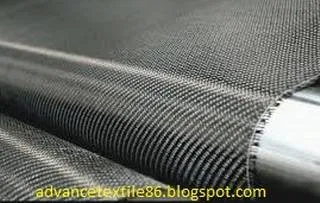Carbon fibers
Carbon fibers consist of fibers
about 5-10 micrometers in diameter and mostly carbon atoms. It has
various advantages including higher hardness, high tensile strength, low
weight, high chemical resistance, high-temperature tolerance, and low thermal
expansion. These features have made carbon fiber very popular in aerospace,
civil engineering, military, and motorsports, among other competitive sports.
However, these are relatively expensive when compared with similar fibers such
as glass fibers or plastic fibers.
Properties of Carbon fiber
1. Carbon fiber is a composite
fiber.
2. It has reinforcement properties,
which provide strength.
3. Reinforcement gives the Carbon
fiber respectively high strength and rigidity.
4. It has directional strength
properties.
5. It has high tensile strength and
stiffness.
6. It has low weight and thermal
expansion.
7. It has high chemical resistance
and temperature tolerance.
8. The atomic structure of carbon
fiber is similar to graphite.
Preparation of Carbon fibers
To make carbon fiber, the carbon
atoms are bound together in crystals that are more or less aligned parallel to
the long axis of the fiber because crystal alignment gives the fiber a volume
ratio of high strength. Thousands of carbon fibers are bundled together to
form a tow that can be used manually or woven into a fabric. Each carbon
filament is made from a polymer such as a polyacrylonitrile (PAN), rayon, or
petroleum pitch. A common method of production involves heating the span of PAN
filaments in the air at about 300 °C, which breaks many of the hydrogen bonds
and forges the material. The oxidized PAN is then placed in a furnace with an
inert atmosphere of gas like argon and heated to about 2000 °C, which alters
the structure of the molecular bond and induces graphitization of the material.
When heated under the right conditions, these chains bind side-by-side, forming
narrow graphene sheets that eventually merge into a single, and columnar
filament structure. The result is usually 93-95% carbon. Low-quality fibers can
be made using pitch or rayon as a prefix instead of PAN. Carbon can be further
enhanced by the heat treatment process as high modulus or high strength carbon.
Carbon heated in the range of 1500-2000 °C exhibits a maximum tensile strength
of 5,650 MPa, while heated carbon fibers from 2500 to 3000 °C exhibit a higher
modulus of elasticity.
Uses of Carbon fiber
1. Carbon fiber filament yarns are
used in a variety of processing techniques: direct use for precipitation,
filament winding, poultry, weaving, braiding, etc.
2. It is used for the fabrication
of carbon-fiber microelectrodes.
3. Carbon fiber is most notably
used to reinforce composite materials,
4. It is used as an aerospace
application.
5. It can be used as an additive to
asphalt to make electrically-conductive asphalt concrete.
6. When woven into large fabrics,
they can be used to provide reliable infrared heating in applicable fields that
require flexible heating elements and can easily hold temperatures up to 100 °C
due to their physical properties.










0 Comments